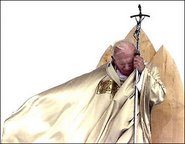And, is it just me, or do the tellers and loan officers all look like high school students these days? I mean, come on . . . . braces and high school rings are très régulier. It is kind of weird.
OK, where was I? So here is the deal . . . .
Most retail banks have done away with annual fees and account minimums on basic accounts.
Some now regularly offer cash incentives and other gifts just for signing up.
However, banks have long refused to budge on their ultra-lucrative policies on overdraft fees. Now, that's changing too.
On July 1, 2010 new federal rules will require banks to ask customers to opt in for overdraft coverage -- a line of credit that kicks in when account holders make purchases that exceed their available checking and debit account balances. PLEASE NOTE -- THIS IS NOT FREE. You will be opting in to be charged for overdraft protection.
To lure customers to their programs, some banks are trimming their overdraft fees. Currently, such fees average $34 per debit transaction or ATM withdrawal, according to the Center for Responsible Lending.
[Click here to check savings products and rates in your area.]
However, under the new law, if account holders don't opt in, banks won't be able to cover their charges when their account balances fall short. The charge simply will be declined, and the customer won't be charged an overdraft fee.
I LOVE this - no more $80.00 pizzas because of a ridiculous math mistake in your check book ledger . . . . have you EVER done that?
You think you have $30.00 in your account and you write a check for a $21.00 pizza?Uhhh ohhh - math mistake.
You only had $20.00 in your account. The bank charges you a $34.00 overdraft fee (but does not, in all cases, pay the pizza place)!
The pizza place charges you a $25.00 fee (as they should - I GET that one).
So when you pay up with great shame, I might add . . . . The pizza $21 + $34 from bank and then $25 from pizza place --- you are out $80.00. It's enough to make one never buy pizza again.
Indeed, I made this mistake ONCE and now EVERYTIME I write a check I get sweaty hands, go back and check my calculation 14X and then call the bank and then check my calculations and look @ my outstanding checks again. Then I go on-line just to "make sure" - I remind myself that checks are not a good idea anyway because people can steal your account number . . . . . It is an OCD nightmare.Still, the banking industry says some demand for the service will persist. "People want their important bills paid," says Nessa Feddis, a vice president and senior federal counsel for the American Bankers Association.
For those who want to retain their overdraft protection, but not the big price tag, here are five tips from MoneySmart.com for cutting your overdraft charges.
Please note that bolding is my emphasis and my comments are in red:
1. Don't Opt In for Overdraft Coverage
Even though some banks recently announced plans to trim their overdraft fees, paying to automatically cover an account overage remains costly. For instance, U.S. Bancorp (NYSE: USB - News) recently announced that any purchase of $20 or less on an account that's overdrawn will be charged $10 -- down from a fee of $19 to $37.50 per violation -- up to three per day. As long as overages put an account more than $10 overdrawn, cardholders who overdraft three times in one day will still be hit with a $30 fee that could have been avoided.
Some banks even charge a fee each day an account is in arrears. For instance, Bank of America (NYSE: BAC - News) charges its customers $35 if it determines that an account has been overdrawn for five or more consecutive business days.
"It's the kind of fee that will come back and bite you," says Bill Hardekopf, the chief executive of LowCards.com, a credit-card comparison site.
2. Carry Backup Cards (Or, have a back-up account at another bank for emergencies -- you know if you are dipping into this immediately accessible account that you are NOT sticking to your budget but at least you are covered. I try to keep $200.00 to $400.00 in mine. If you dip into it then it becomes a TOP priority to replenish it.)
Cardholders who don't opt in for overdraft coverage but carry borderline balances still may get turned away at the register. Consumers should keep at least two or three backup cards in their wallet and a little cash just in case, says Odysseas Papadimitriou, the CEO of Evolution Finance, which publishes CardHub.com, a credit card comparison web site. "Keeping an extra one or two credit cards on hand can help prevent running out of payment options if some sort of fraud-related hold strikes your account," he says. (We use NO CREDIT CARDS in our household so this is not an option for us. CREDIT CARDS are JUST for building credit and are treated like cash - paid immediately)
3. Balance Your Checkbook (Duhhh!)
To avoid needing a backup, account holders should keep an eye on their account balances, says Papadimitriou. They should check weekly, or even daily if they're operating on the edge, he says. Then, cardholders should be vigilant about withdrawing funds from retail stores that offer cash back on debit-card transactions. Although banks will generally alert customers if they're about to go over their limit at ATMs, in-store debit withdrawals typically won't trigger any overage notification, Papadimitriou says. It's still not clear whether this problem will be fixed when the overdraft coverage opt-in provision takes effect, he says.
4. Sign Up for Payment Alerts
Cardholders given to procrastination should consider signing up for payment alerts, says Papadimitriou. Most card issuers, including JPMorgan Chase (NYSE: JPM - News), American Express (NYSE: AXP - News) and Bank of America, have long offered to alert their customers when account overages occur or when payment due dates are imminent. "We're trying to help customers to reduce overdraft fees," says a BofA spokesman. "We don't want them to buy a $40 cup of coffee."
5. Consider Certain Overdraft Protection Options (I like this one)
Consumers might also consider linking their checking account to either a savings account or a credit card, suggests Hardekopf. There is usually a $5 to $10 fee for dipping into another account. Plus, linked accounts with credit cards carry the potential for getting hit with interest charges. However, for customers who pay off their balance each month, this can a good option, he says. If not, those fees, which get rolled into customers' balances, could come back to haunt them, he says.
Some banks tack on interest charges right away. For instance, U.S. Bank offers to link customers' checking accounts to a reserve line of credit, which charges a "slightly higher" interest rate on overages at the time of the advance, says Kent Stone, an executive vice president for consumer banking at U.S. Bank.
SOURCES:
SmartMoney.com
Yahoo Finance









No comments:
Post a Comment